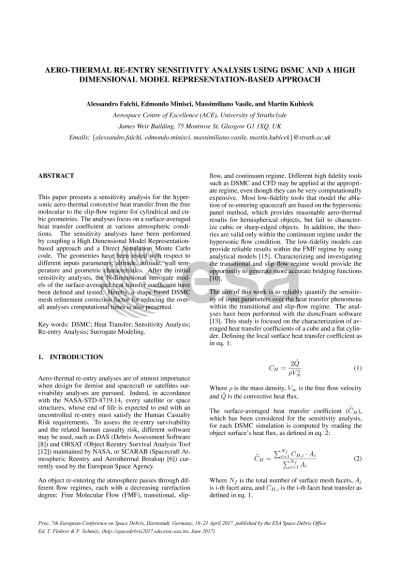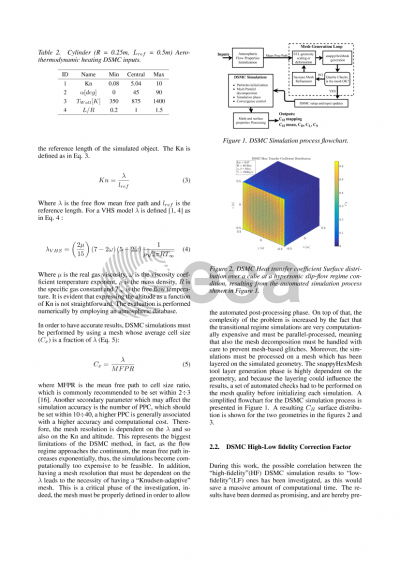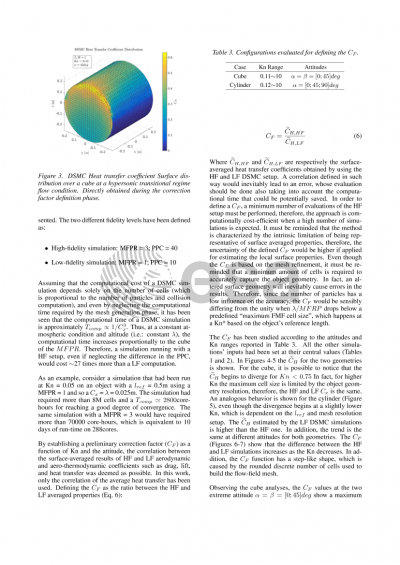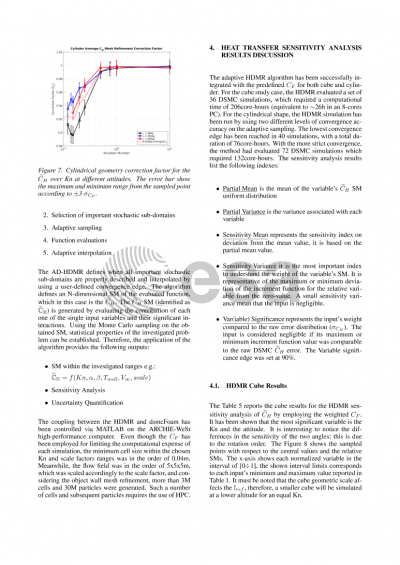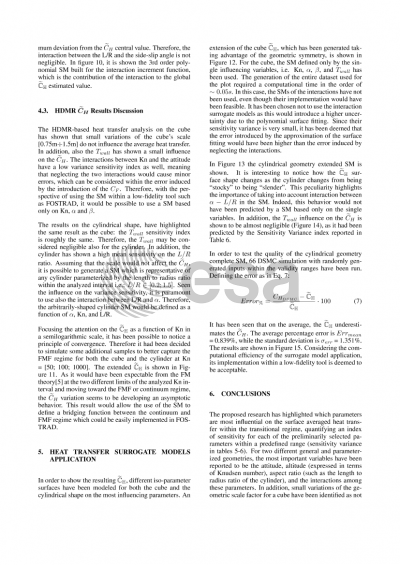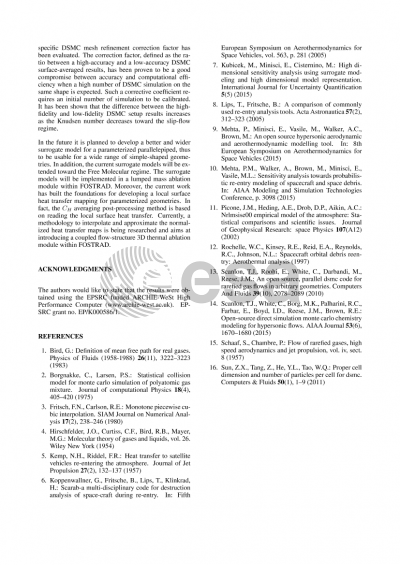Document details

Abstract
Aero-thermal re-entry analyses are of utmost importance when studying Design for Demise and spacecraft or satellites survivability assessments. Indeed, in accordance with the NASA-STD-8719.14, every satellite or space structures whose end of life is expected to end with an uncontrolled re-entry must satisfy the Human Casualty Risk requirements. To assess the re-entry survivability and the related human casualty risk, different software may be used, such as; DAS (Debris Assessment Software) and ORSAT (Object Reentry Survival Analysis Tool) and maintained by NASA, or SCARAB (Spacecraft Atmospheric Reentry and Aerothermal Breakup) currently used by the European Space Agency.
This paper presents a sensitivity analysis for the aero-thermal surface heat transfer within the transitional regime. The sensitivity analysis will be performed by coupling a High Dimensional Model Representation-based (HDMR) algorithm and a Direct Simulation Monte Carlo (DSMC) code developed at the University of Strathclyde. The HDMR code evaluates the function in a very efficient way, which is paramount due to the coupling with the DSMC operating within the transitional regime. The DSMC code dsmcFoam based on the platform OpenFOAM uses a Quantum-Kinetic chemical reacting model and a mixed specular-diffusive Gas-Surface Interaction model. Due to the extremely long DSMC computational times, the simulations are performed on Archie-WEST High-performance computer.
Different shapes are tested and evaluated with respect to 5 different inputs parameters; altitude, attitude (side-slip and angle of attack), re-entry velocity and geometric dimension. By using a 5 species atmospheric model, the altitude controls the atomic and mass density, and the atmospheric temperature. The study focuses on the surface heat transfer coefficient provided by the dsmcFoam code.
A short note on the coupling: the HDMR code provides the inputs to a controller built for managing the DSMC code. When the simulation reaches the convergence, the surface heat transfer coefficients are post-processed. Afterwards, the HDMR code stores and performs an adaptive interpolation of the results to determine the influence of each single input and their cross-interactions.
The motivation behind this work is to reliably quantify the sensitivity of input parameters over the heat transfer phenomena within the transitional regime. Indeed, most low-fidelity tools that model the ablation of re-entering spacecraft are based on the hypersonic panel method, which provides reasonable aero-thermal results for hemispherical objects, but fails to provide a good estimate for cubic or sharp-edged objects. With this work results, it would be possible to obtain a better characterization of the bow-shock influence over the aero-thermal heating. The implementation of these results within a low-fidelity re-entry tool would provide a better surface heating coefficient estimation for non-hemispherical objects. The results will be applied for different purposes:
• Surrogate modelling of different shapes usable to provide a high-fidelity-based heat transfer quantification
• Re-entry analysis low-fidelity tools development based on high-fidelity code results
• Preliminary Design for Demise and low-fidelity ablation modelling tools
Preview
